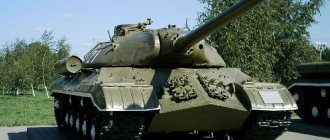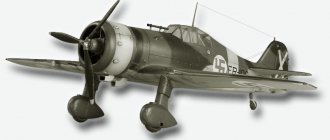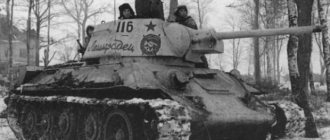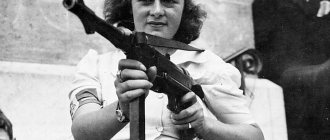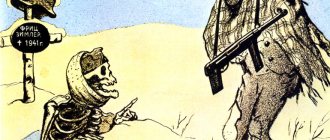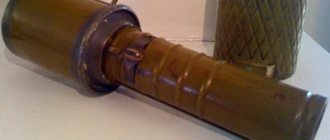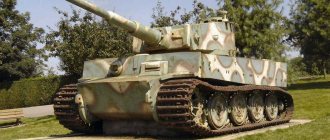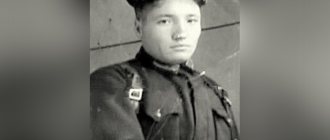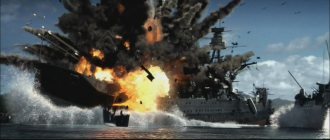A separate book could be written about the path of the Tu-2 bomber to the assembly line. It began when the repressed designer Andrei Tupolev ended up in the “sharashka” - a prison design bureau. In 1939, Tupolev led the work to create the PB long-range dive bomber.
It was from this project that perhaps the best Soviet aircraft for its class and time would be born. Although it took years to put the Tu-2 into production, military aviation eventually received a powerful front-line bomber. But the capabilities of this aircraft were not limited to bombing - the aircraft was both a reconnaissance aircraft and a torpedo bomber.
History of creation
The unusual thing about the PB project was that dive bombers are usually light front-line aircraft. The PB was a long-range four-engine vehicle. It was supposed to be used to destroy ships of the British fleet - the range was needed to get to British bases from the territory of the USSR, and dive bombing would ensure accuracy.
In 1940, the Main Directorate of Aviation Supply reviewed the PB project and issued a conclusion. Four engines were considered redundant - a twin-engine aircraft would be smaller, simpler and cheaper. And the possibility of war with Britain was no longer on the agenda. So the special technical department “103” began to work on the FB twin-engine front-line bomber. Flight range requirements were reduced, and pressurized cabins were no longer required.
It was required to build prototypes of a three-seat FB with AM-35A engines by the end of 1940 and the beginning of 1941.
There were few wishes - except that they decided to add two 20mm cannons to the four frontal machine guns. In fact, by January 1941, only the first “aircraft 103” was assembled. At the same time, it was not equipped with AM-35 engines and M-102 engines not provided for in the original design, but with AM-37 engines.
“103” entered state tests in June 1941. The bomber demonstrated high quality and was recommended for construction. But the plans were interrupted by the beginning of the German invasion. Released from prison, Tupolev left with the evacuated plant for Omsk. The prototype “103” also went there. But mass production was still a long way off.
On the second prototype – “103U” – the crew placement was changed. If previously the navigator sat separately from the pilot, in the tail section, now he was seated in the pilot’s cockpit. The gunner-radio operator's post remained in the tail compartment, who could now not be distracted by navigation. Both cabins were connected by a tunnel above the bomb bay. This plane crashed during testing.
The third "103" was built in Omsk. It was equipped with M-82 star-shaped air-cooled engines. The bomber was sent into flight in the fall of 1941, but the tests dragged on for several months due to the low reliability of the engines. Meanwhile, in the spring of 1942, the aircraft received the official designation Tu-2.
It was recommended to put it into production under this name.
Military tests of the aircraft began in May 1942, the flight and combat qualities of the bomber were rated very highly, but at the same time the design was constantly underdeveloped. And production was mastered slowly, and as a result, production of the Tu-2 was stopped in October 1942.
In 1943, Tupolev, having returned to Moscow, began refining the Tu-2. In addition to the installation of “finished” and uprated M-82FN engines, the new version featured a simplified design. The set of equipment was reduced to the required minimum, the hydraulic system was simplified, and the number of electricity consumers was reduced. During testing, the new Tu-2S showed an increase in flight performance. In September 1943, serial production of the Tu-2 was resumed.
Production of Tu-2 aircraft (1942 - 1952)[1]
| Model | Factory | 1942 | 1943 | 1944 | 1945 | 1946 | 1947 | 1948 | 1949 | 1950 | 1951 | 1952 | Total |
| Tu-2 | №23 | 16 | 378 | 689 | 188 | 244 | 259 | 2 | 2320 | ||||
| №166 | 79 | 1 | 1 | 48 | 62 | 110 | |||||||
| №39 | 5 | 48 | 161 | 4 | |||||||||
| №82 | 19 | 6 | |||||||||||
| Tu-2R (Tu-6) | №23 | 20 | 1 | 50 | 71 | ||||||||
| Tu-2U | №23 | 33 | 23 | 78 | 134 |
NOTES
- Statistics on serial production of the Tu-2 are given in the publication: History of the Domestic Aviation Industry. Serial aircraft construction, 1910-2010/Under the general editorship. YES. Soboleva. M.: RUSAVIA, 2011. - 432 p.: ill., p. 220 []
Design
The Tu-2S bomber is an all-metal cantilever twin-engine mid-wing. The duralumin fuselage had wooden elements and was assembled from three sections connected by bolts.
In the cockpit, the pilot and navigator sit behind each other, with the pilot’s seat shifted to the left side, and the navigator’s seat to the right.
The top of the cabin is covered with a canopy, both side sections of which fold down (the left one, together with the top cover). The lower part of the nose is glazed; several transparent sections fold down to act as an escape hatch. The pilot's seat had an armored backrest 15mm thick. From the outside, the cabin was protected by armor plates 6-15mm thick.
In the central part of the fuselage there is a bomb bay and fuel tanks. In the tail section there is a cabin for the radio operator and the lower gunner with two machine gun emplacements. The floor of the rear cabin and the spinner of the tail section of the Tu-2 are wooden. The rear cabin was also protected by armor plates with a thickness of 6 to 12 mm.
Trapezoidal wings - metal, with wooden tips. The ailerons are covered partly with duralumin, partly with canvas. The two-fin tail is made of duralumin, with rudders covered with canvas. The aircraft is controlled through rigid rods made of duralumin pipes.
The 14-cylinder M-82FN (ASh-82Fn) engines were equipped with direct fuel injection and centrifugal superchargers. Each bomber engine developed power up to 1850 horsepower. The motor mounts were attached to the bomber with rubber shock absorbers and covered with NACA hoods.
In addition to two tanks in the fuselage and four in the center section, the Tu-2 had four tanks in the wing consoles. These tanks were divided into three groups with their own fuel lines each. All tanks are aluminum, protected, pressurized with neutral gases.
Bombs with a caliber of up to 1000 kg were suspended in the bomb bay; aiming during bombing using the OPB-1 sight was carried out by the navigator.
The dive bombing was carried out by the pilot, aiming using the PBP-1b collimator sight.
The standard armament on the mass-produced Tu-2 aircraft consisted of two 20mm ShVAK cannons at the root of each wing. Each gun had an ammunition load of 150 shells, aiming through the PBP-1b sight. Three defensive installations were equipped with 12.7mm UBT machine guns.
Modifications
The design of the Tu-2 made it possible, due to the installation of additional equipment, to obtain many specialized modifications. Not all of them were put into production, but the list of proposed projects was extensive. A super-fast bomber in the style of the British Mosquito was developed on the basis of the Tu-2. But the AM-39 engines turned out to be too unreliable, and according to flight data, the aircraft did not reach the required parameters.
They tried to get a long-range bomber from the Tu-2 by increasing the fuel supply and installing a primitive autopilot. Experience has shown that this is not enough. The aircraft with a co-pilot seat was built only towards the end of the war, and development dragged on until the end of the 40s. The car turned out to be a failure.
But the good reconnaissance aircraft Tu-2R (later Tu-6) was mass-produced with an additional gas tank in the bomb bay and an installation for cameras. The Tu-2T torpedo bomber with torpedo holders and the presence of a rescue kit did not go into production, but the base bombers were converted into them by the workshops.
They tried to convert the Tu-2 into an attack aircraft.
To destroy infantry concentrations, a battery of 88 PPSh submachine guns was installed in the bomb bay; the project was not developed. Having studied the American B-25G, they developed an attack aircraft with a 76mm caliber gun. The recoil of the gun was too strong. In addition, training aircraft and flying laboratories were built on the basis of the Tu-2.
After the war, aircraft production did not stop, but the bomber had to be significantly modified. They installed more advanced instrumentation and began to get rid of wooden elements in the structure. An anti-icing system has appeared. One of the latest improvements was the introduction of electrically driven machine gun turrets.
Combat use
Already during front-line tests of the first production Tu-2s, pilots highly appreciated their flight qualities, survivability and powerful bomb load. Well, the resumption of mass production in 1943 allowed the start of offensive operations to arm itself with bombers capable of destroying powerful fortifications.
The Tu-2 began to be actively used during the offensive in Karelia. The bombers then took part in Operation Bagration, and their last combat mission took place on May 2, 1945.
Tupolev's aircraft successfully fit into the niche of powerful front-line bombers - Pe-2s continued to be used as light dive bombers, and American B-25s were better suited for long-distance raids to the rear. After the victory in Europe, the Tu-2s were transferred to the east, where they bombed Japanese targets with no less effectiveness.
After the war, Tu-2s began to be supplied to friendly regimes.
In Hungary, Poland and Bulgaria they served until the mid-50s. Chinese bombers managed to take part in the Korean War, but were not used very actively. Later they were used in battles with the Kuomintang, and were officially withdrawn from service only in 1980. In the USSR itself, Tu-2 bombers began to be removed from combat units in 1950. They served in supporting roles until the 60s.
New front-line bomber for the Red Army Air Force. What should the plane be like?
Before the outbreak of World War II, the Soviet Union possessed perhaps the largest air force in the world. However, despite the fact that the air force had a fairly large number of combat aircraft of various classes, it would be a stretch to call Soviet military aviation of that period modern. Failures and huge losses on the Soviet-German front in the first months of 1941 are real confirmation of this. Neither Soviet fighters nor front-line bombers for the most part could successfully compete with the German Luftwaffe. The situation with bomber aircraft, which could not provide the necessary level of air support for the Red Army fighting the enemy, looked especially deplorable.
SB
The bomber regiments that were available in large numbers in the Red Army Air Force were mainly equipped with obsolete SB type aircraft. Just two, three years ago, these were the best aircraft in their class. By the time the Great Patriotic War began, this front-line bomber was considered obsolete, as not meeting modern conditions of air warfare. New aircraft, among which was a front-line bomber, the Tu 2 aircraft, were just beginning to arrive in combat units or were still under development. In a word, Soviet bomber aviation, in the face of the outbreak of aggression, found itself in an uncombatable state. Outdated machines could not cope with the assigned tasks, while incurring huge losses. At that time, the new Pe-2 bombers were clearly not enough. The insufficiently intensive pace of mass production of this machine had an effect.
In these difficult conditions, the country's top leadership begins to look for ways out of the current situation. The Pe-2 alone is clearly not enough to raise the power of front-line bomber aviation to the required level. Another type of front-line bomber was required, which would be superior in its flight, technical and tactical characteristics to similar German aircraft. The aircraft developed in the design bureau of A.N. became a kind of lifesaver. Tupolev. The aircraft was originally called the Type 103 dive bomber. A little later, the new bomber was given the name Tu 2 - “Tupolev the second”.
Tu-2 over Berlin
Many glorious pages of the Soviet Air Force are associated with this front-line bomber. It was this aircraft that was the main front-line bomber at the final stage of the Great Patriotic War. Tu-2 regiments took part in raids on German positions during the liberation of Belarus in the summer of 1944. Soviet “carcasses” literally hung over the Germans’ heads during the assault on Konigsberg and the capture of Berlin.
Specifications
Let's compare the Tu-2 with similar bombers produced in 1944. These are the German Ju.88 S series and the British Mosquito.
| Tu-2 | Ju-88S | Mosquito B.XVI | |
| Length, m | 13,7 | 14,8 | 13,5 |
| Wingspan, m | 18,8 | 20 | 16,5 |
| Maximum take-off weight, t | 11,5 | 13,8 | 10,4 |
| Maximum speed, km/h | 549 | 605 | 668 |
| Range, km | 2050 | — | 2890 |
| Maximum bomb load, t | 2 | 2 | 1,8 |
Even in the high-speed bomber version, the Junkers was inferior to the Soviet aircraft in terms of flight data. However, for a short time it could reach more than 600 km/h - due to the injection of nitrous oxide. But the British aircraft, while losing to the Tu-2 in terms of maximum combat load, was superior to it in both speed and altitude.
Attempts to raise the characteristics of the Tupolev aircraft to a similar level were unsuccessful. At the same time, the Mosquito B.XVI was made of wood and canvas, which reduced the weight of the machine, but the durability of the structure left much to be desired.
The Tu-2 turned out to be a machine that was generally at the level of similar foreign aircraft, and made a significant contribution to the overall victory.
At the same time, it was never able to replace outdated aircraft and become the main medium bomber of the Soviet Air Force. This does not in any way detract from his role or the achievements of the designers, but it shows that the USSR aircraft industry at that moment was in a difficult situation.
CAR IN THE AIR - FINALLY!
“December 15 this year.
(1940 - Author), pilot of plant No. 39 Fedorov made two flights on the Pe-2 aircraft No. 390101. On the first flight, the pilot was tasked with checking the operating mode of the aircraft's propeller group and retracting and extending the landing gear. The first flight lasted 44 minutes at an altitude of 300–800 meters. The landing gear was retracted and released twice - the first time at an altitude of 800 meters and the second time at an altitude of 450 meters.
On the first flight, all components of the aircraft worked normally, and the aircraft behaved well in flight. After landing and checking, the aircraft was released for a second flight to check the operation of the propeller group at an altitude of 4,000 meters.
The second flight lasted 15 minutes, the plane rose to an altitude of 4,200 meters. According to pilot Fedorov, the plane easily gains altitude and behaves normally in flight.
Today, December 15th, work on static tests of the fuselage and measuring vibration vibrations of the aircraft will be completed, after which on December 16th the aircraft will be cleared for high-speed tests.”
The head example of the Pe-2 dive bomber No. 390101, built by plant No. 39. Photo from the archive of S. G. Moroz
On the same day, People's Commissar of the Aviation Industry Shakhurin sent this letter No. N-25/3742 personally to Stalin - the level of the document and its efficiency best speak of the importance attached to Petlyakov's dive bomber. Meanwhile, there were two weeks left before the deadline established in the Resolution of the Council of People's Commissars for transferring the aircraft to State testing. Only the well-coordinated work of the OKO-22 team and plant No. 39, led by its director Zhuravlev, who was also concerned with mastering the serial production of the DB-3f long-range bomber designed by Ilyushin, helped to avoid falling behind.
The next day, the military acceptance pilot of Plant No. 39, Fedorov, checked the flight on one engine - the Pe-2 remained stable in the air, and on December 17 he confirmed the speed of 540 km/h at the altitude limit, and the rest of the calculated points practically coincided. By the 18th (in four days!) the experienced Pe-2 had made 10 flights and had flown 4 hours and 53 minutes; the longest duration of one flight was 1 hour and 13 minutes—an unprecedentedly high pace for such work. At the same time, there was not a single failure, and the plane, according to the pilot’s report, behaved normally in all modes, including landing, for which they were especially worried. The report was drawn up on December 19, and on the 22nd the new dive bomber arrived at the Air Force Research Institute.
Test pilot of plant No. 39 Nikolai Konstantinovich Fedorov, who performed the first flight on the Pe-2 dive bomber. Photo: https://testpilot.ru/base/2014/11/fyodorov-nk/
Although so far the Pe-2 only flew without weapons and with a weight of no more than 6,800 kg, the Institute’s management “didn’t take a stand” and began its flight program, agreeing to carry out the unfinished part of the factory flights “above plan.” They were supposed to be made by Major Stefanovsky, who tested the VI-100.
Test pilot of the Red Army Air Force Research Institute Pyotr Mikhailovich Stefanovsky, who conducted State tests of the VI-100 and Pe-2. The photo was taken in the fall of 1941, when Stefanovsky commanded the 402nd IAP flying a MiG-3. Photo: https://lib.rus.ec/i/86/495386/i_018.jpg
On an armed aircraft, the flight performance decreased, but not much. The list of defects was worse - 187 items. The most dangerous were failures of the constant speed regulators R-2 of the VISH-61B propellers, which were not observed in factory tests, as well as incorrect adjustment of pressure in the landing gear shock absorbers, which caused the aircraft to “goat” at the slightest mistake during landing.


